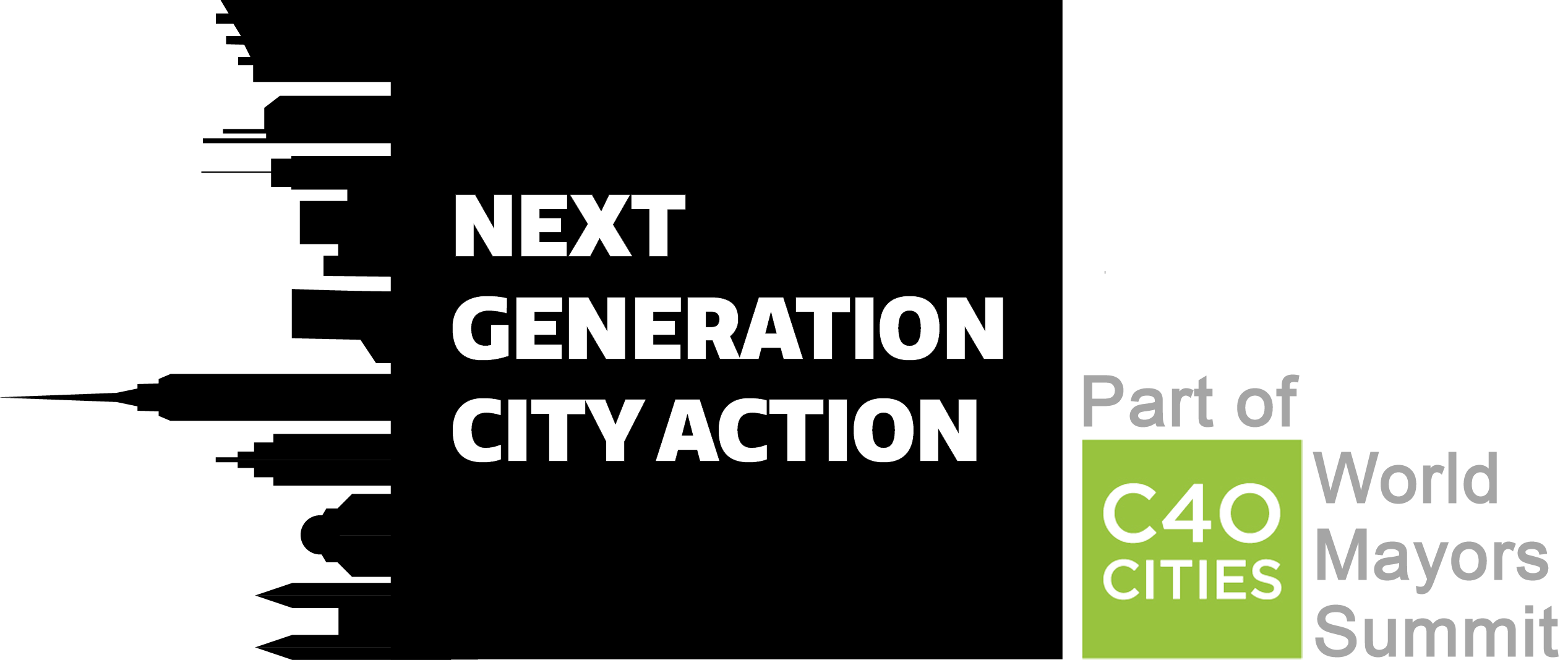Energy Efficiency of Buildings, Mexico City
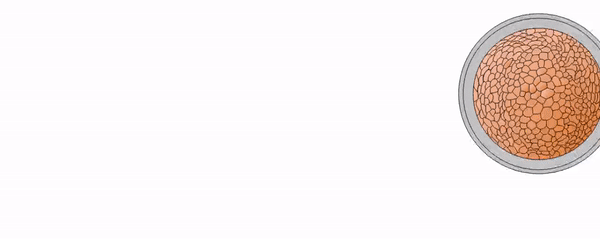
About Mexico City
In the last years, the temperature in the city has increased by 4°C. It is not only the temperature of the environment that generates a superior thermal sensation, but also the growth of buildings that absorb and reflect solar radiation, which causes areas in the city where heat islands are generated (the heat island effect occurs when a city is warmer than its surrounding areas as an effect of human activities). That is why 30% of the consumption of electricity in the residential and private sector of Mexico City is used in thermal comfort (according to the Comisión nacional por el uso eficiente de la energía, CONUEE, by its acronym in Spanish).
In 2018, the industry of air conditioning systems grew a 7%. Since 1998, annual sales of air conditioning units have had tripled up to 600.000 units per year in the mexican territory (Refrinoticias, 2018); creating a big pressure for the national electrical system and the need of increasing the energetic efficiency in buildings and habitational spaces.
Mexico aims to generate 35% of the country’s electricity in 2024 with clean energy sources, such as wind, solar, hydroelectric, geothermal, biomass and efficient cogeneration. And to reduce its greenhouse gas emissions by 25% by 2030.
City Challenge
The growing concern about the consequences of climate change has been an aspect to be taken into account by the general population. This has led the construction area to look for alternatives with new technologies to design more energy-efficient buildings. This kind of buildings can be defined as those that are designed to provide a significant reduction on the energy needed for heating, cooling, illumination and so on. Among the new technologies, thermal energy storage is key as it offers several alternatives.
Solution
The proposed solution for Energy Efficiency in buildings in Mexico City consist in using phase change materials in different applications. Phase change materials (PCM) are substances that have a high latent heat (heat of fusion), which gives the material the capacity of storing or releasing large amounts of heat when the material melts or solidifies (Coyle & Diamond, 2010). This property makes the materials useful to incorporate in different applications as thermal energy storage. This solution is a greater way of storing thermal energy because of its high thermal storage density, isothermal nature of the storage process and self-control. The aim is to take advantage of the properties of these materials and incorporate them to reduce energy consumption in buildings and therefore, CO2 emissions.
Microencapsulated phase change material
The MPCM components are: the core is a eutectic mixture of fatty acids, and the shell is a resin (urea-formaldehyde). The process of encapsulation prevents spills when the material changes phases within the core. Based on the desired temperature that is wanted to regulate, a material with a suitable melting point using a eutectic mixture could be achieved.
Solution 1: Building System with Thermal Insulation Properties
The demand for electrical energy due to the need for thermal comfort in the construction sector is increasing rapidly. Currently, 45% of homes in Mexico use fans, and there are more than 7 million air conditioning units in use in homes throughout the country, which on average, are used between 5 to 9 hours a day (Instituto Nacional de Estadística y Geografía, 2018). On the other hand, a comfortable temperature is required also in the winter season. It is a fact that the cost for thermal comfort in Mexico City is increasing, and accelerated growth is predicted in the next 10 years. So taking action must be contemplated in the city’s energy plans.
Phase change materials (PCM) increase the thermal mass of buildings, and thus, cause a drop in cooling/heating loads, which decreases the demand for electrical energy due to thermal conditioning units. However, the direct incorporation of PCM into building elements can reduce its structural performance and create leaks, hence, to preserve the structural functioning of the building, microencapsulated PCMs (MPCM) are applied and properly integrated into the materials of construction. The process of microencapsulation aims to create a barrier between the PCM and the construction material in which it would be applied.
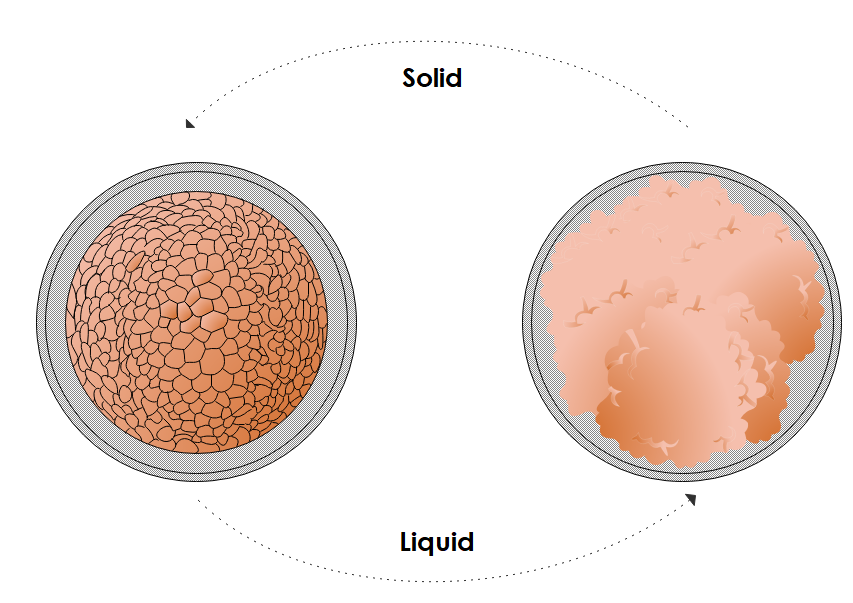
The operating principle of these materials is that they absorb and release thermal energy to maintain a regulated temperature. When the environmental temperature is high, the PCM absorbs heat and changes its phase from solid to liquid, storing that heat, causing it to not enter the building and therefore, making the temperature inside the building lower than the outside temperature. And at night, the MPCM in its liquid phase releases the heat it absorbed as the external temperature decreases, and changes its phase for solid. During this phase change, the MPCM provides a comfortable temperature without HVAC systems. It is noteworthy, that the MPCM works for both warm climate preventing heat from entering, and cold climate, preventing heat from leaving, to provide a comfortable temperature just using the resource of the material’s properties.

The use of mortar in construction has been very diverse in Mexico. It is widely used as a plaster or filling material, as a glue material in masonry, and in recent times in structural masonry. Thus, to be able to apply this solution (that consists of the incorporation of this microencapsulated phase change material MPCM to the mortar plaster), the addition of the MPCM shouldn’t affect the mechanical properties of the construction, and the most important factor that must be evaluated is the resistance to compression. In addition, its plasticity, water retention, qualities of inalterability, non-cracking, etc. must be evaluated, properties that are very difficult to gather and that require a complex elaboration.
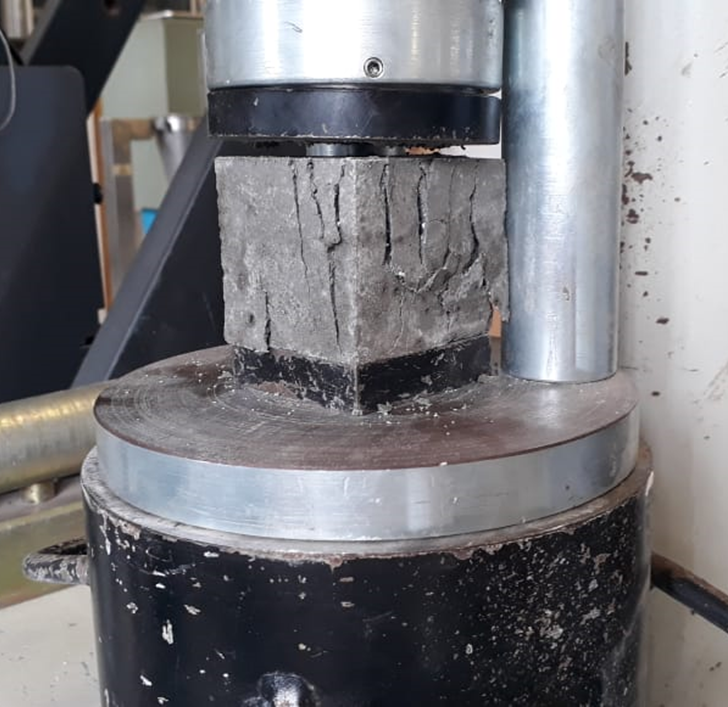
Compressive strength
According to the regulation of Construcciones para el Distrito Federal, according to the Mexican norm NMX-C-486-ONNCCE-2014 mortero de uso estructural, the minimum compressive strength for mortars type I, type II and type III is 12.5 MPa, 7.5 MPa and 4 MPa, respectively. The standard also specifies that the dosage must be endorsed by a laboratory to comply with resistance and bursting.
We developed an experimental procedure to evaluate the compressive strength of the material. Incorporating 15% of the MPCM in the dosage of the mortar, a compressive strength on the seventh day of 13.25 MPa was obtained. Therefore, this application complies with Mexican legislation for all mortar types.
Thermal performance
Modeling the phenomenology helps us validate the objective of this application and in a certain way, to show which factors of the design and process are relevant when obtaining the results of temperature decrease through a simulation. We performed a computational simulation to validate the reduction of the temperature inside a building when the MPCM is added to the mortar. Taking a case of study of a room without air conditioning or ventilation systems and with external conditions typical of Mexico City summers, the equations and the results obtained are shown below.
The picture in the right shows the mechanisms of heat transfer that were considered in the model made.

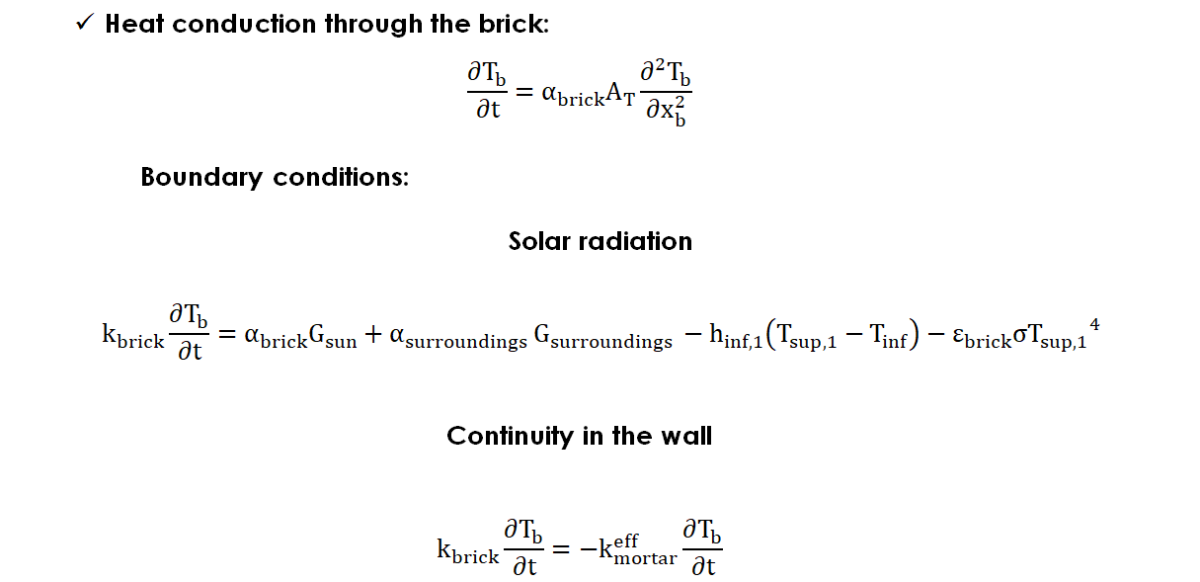
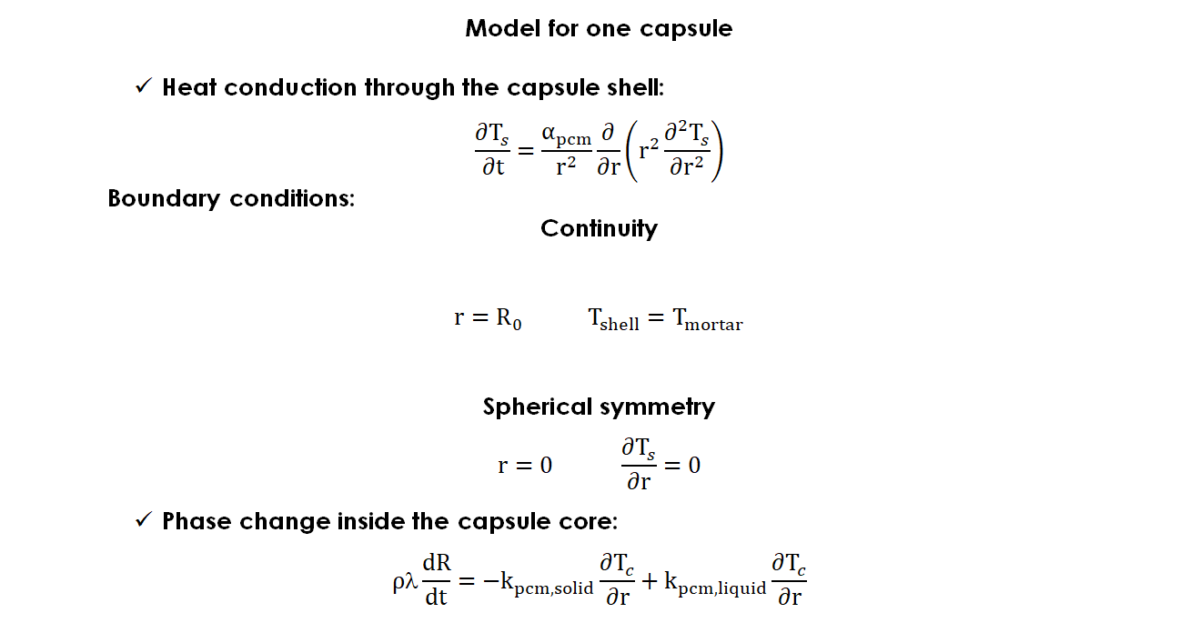
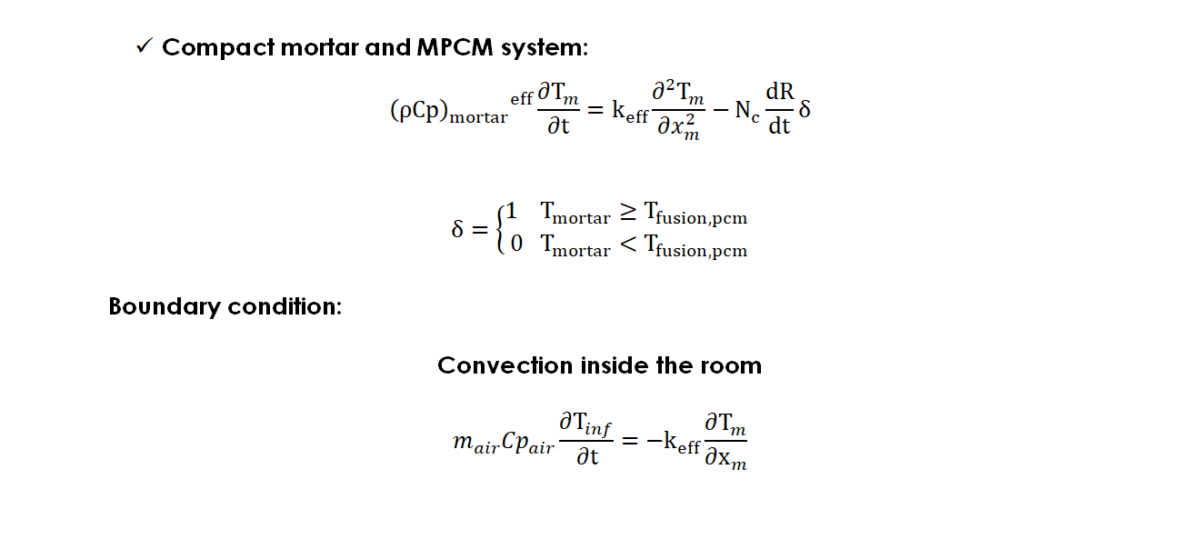
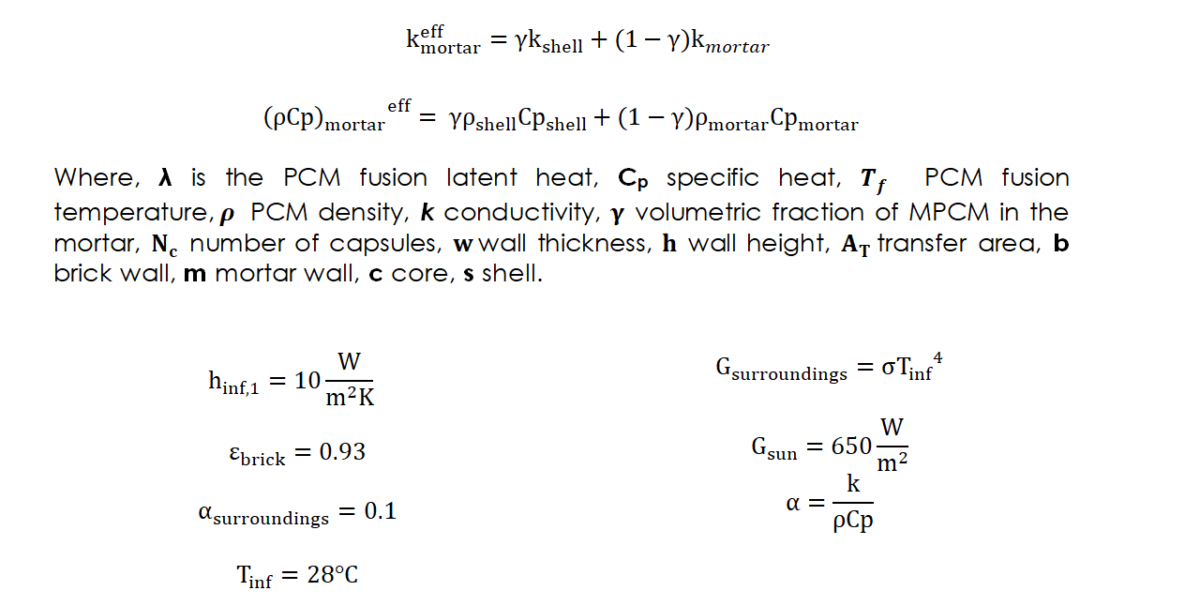
In the next pictures the graphic solution is displayed. The solution shows how the complete system (brick-mortar-MPCM) works. In the picture in the left side, the initial condition corresponds to the heat absorbed by the building (related to solar radiation) and the lines show the temperature through all the construction materials that are in the wall (conduction). The last point in pink in the right picture corresponds to the temperature inside the building.
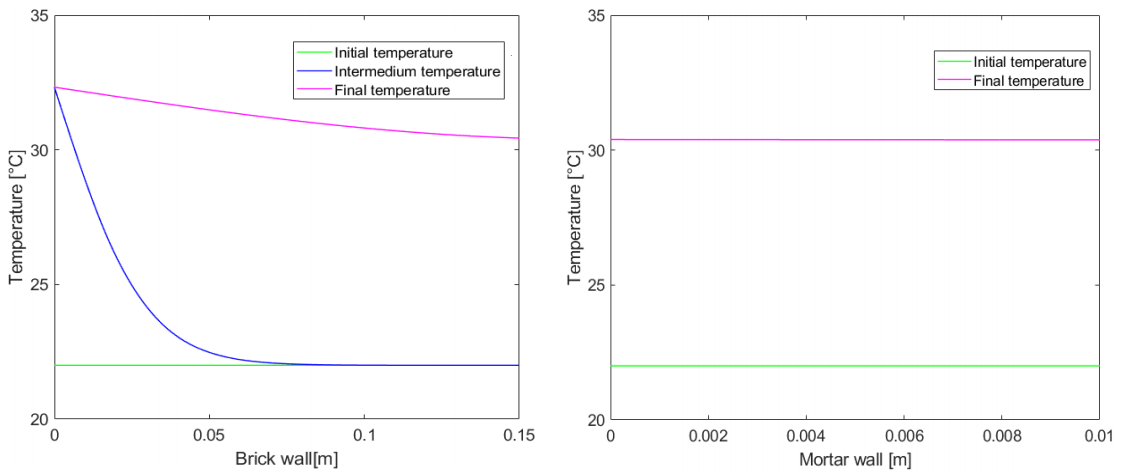
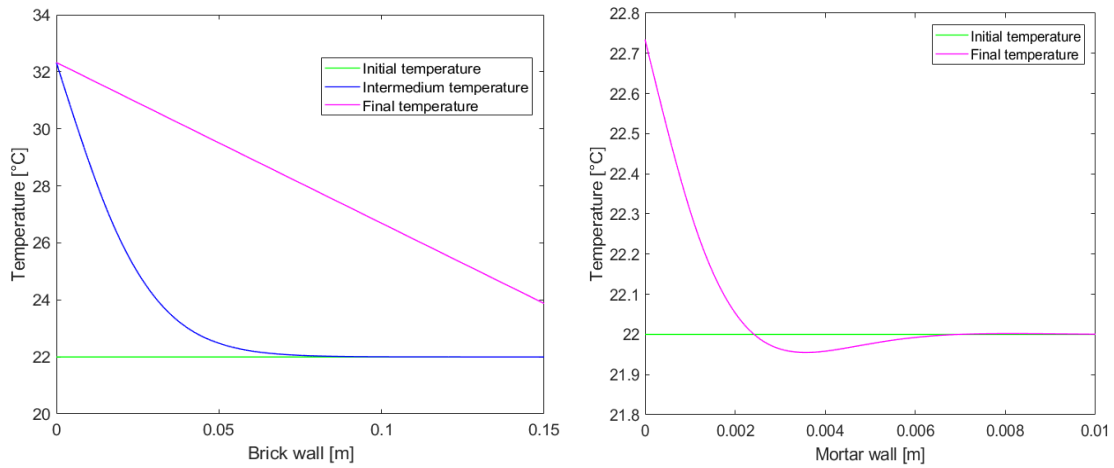
Recution of 8°C without Energy Consumption
It was obtained that using the material, the final temperature inside the building without air conditioning would be 22°C, if the outside temperature is of 32°C. As shown in the picture below.
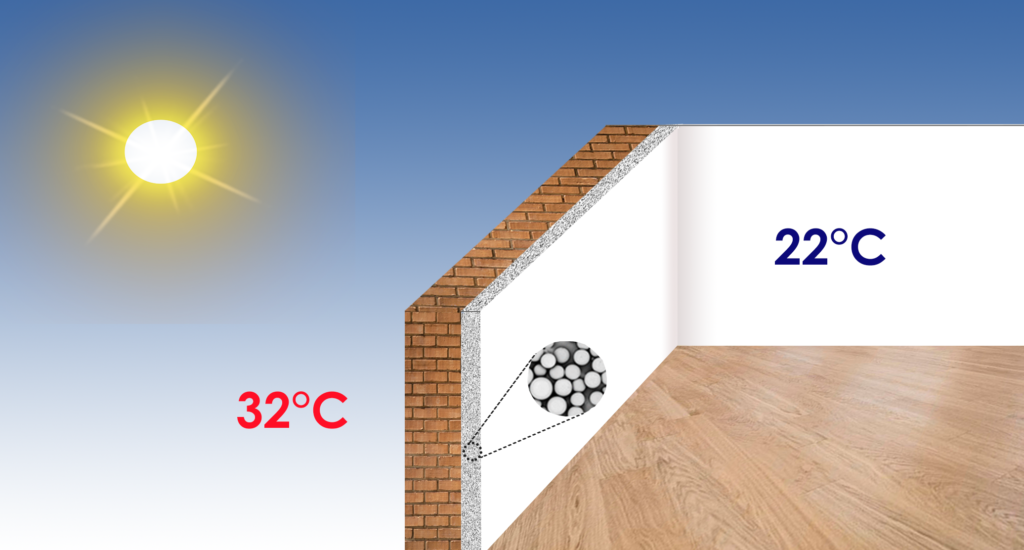
Government entities of Mexico City use electrical energy, gas, and diesel to heat up and maintain water heated in different buildings, such as hospitals and residential buildings. Of the total diesel consumed in government entities of Mexico City, 83% corresponds to the dependencies. The government and health secretariats report the highest expenditure, with 54% and 37% respectively, Its main use is in boilers. The high consumption of liquefied petroleum gas and diesel in the Government and Health secretariats is since they are in charge of prisons and hospitals, places where there is a high demand for water heating (Gobierno de la Ciudad de México, 2017). In addition to this, the demand for this requirement is also in residential and commercial buildings, both public and private.
Accordingly, the Secretaría del Medio Ambiente of Mexico City, in 2018 published an environmental standard “NADF-008-AMBT-2017”, which states that all new buildings, facilities and establishments, must have a solar water heating system with the aim to reduce CO2 production due to fossil fuels consumption and start to harness solar energy. An overview of some general specifications required are shown hereunder:
| Property type | Annual energy consumption to be met |
|---|---|
| Private residential building | A heating solar system that supplies at least 70% and GEI reduction by 35% |
| Housing of social interest or government-funded | A heating solar system that supplies at least 70% and GEI reduction by 40% |
| Private establishments and facilities | A heating solar system that supplies 35% |
| Public administration establishments and facilities and the legislative field | A heating solar system that supplies 40% |
To carry out the minimum requirements established by the environmental regulations, we propose to use a thermal storage water tank that is built-in with phase change material to obtain a whole system even 30% more efficient. Incorporating phase change materials into the heat storage units can’t only reduce the volume but also allow heat to be absorbed and released almost at a constant temperature. It can transfer heat stably, prevent the disadvantage of water boiling in the tank and temperature falling too fast during the night, avoiding the shortcomings of traditional water tanks related to heat losses.
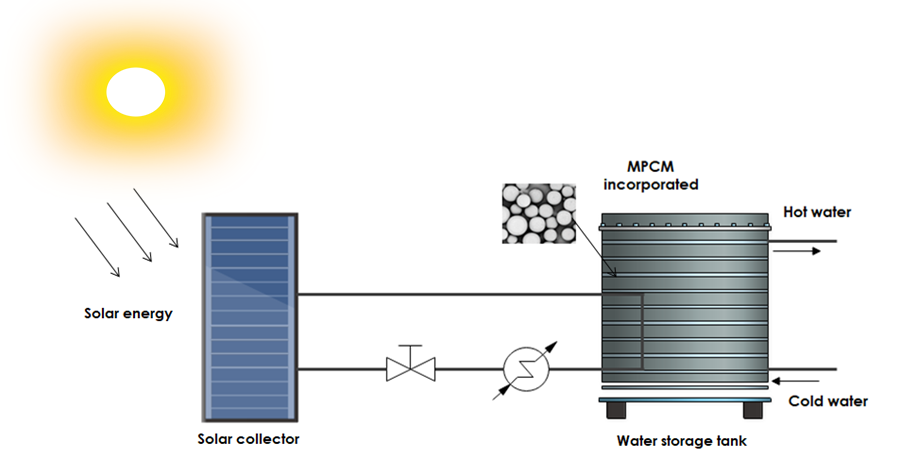
The way these materials work in this application is by absorbing their latent heat (needed to change their phase from solid to liquid) from the environment and storing it. While the collector heats the water inside the tank, the MPCM maintains the temperature of the water inside the tank almost constant, avoiding heat losses outside the tank. And at night or when the temperature drops, the material would change its phase from liquid to solid, releasing its latent heat to the water inside the tank, and therefore, maintaining the temperature of the water almost constant, without the need of more energy consumption of the solar heating systems.
Legislative Framework, Proposed Regulations
Nowadays, in Mexico City, there are some regulations that aim to promote the use of eco-technologies in buildings and enterprises, in order to reduce electrical energy consumption and with that, CO2 emissions. These norms and regulations, consist of reductions of property taxes for enterprises if they reduce their electrical energy consumption (Código Fiscal del Distrito Federal, Article 277), and reductions on the costs of the rights of water supply or reductions on property taxes to house properties if a reduction of the electrical energy consumption is made or a green roof is installed, respectively (Código Fiscal del Distrito Federal, Article 276 and NADF-013-RNAT-2007). However, these benefits are no longer attractive to the owners of buildings and industries, therefore, they aren’t allured to use these eco-technologies.
To target this drawback, a legislation for private buildings could be proposed. It should help and incentive them to use eco-technologies that help reduce CO2 emissions by reducing the consumption of electrical energy. The legislation we propose consists of:
Buildings that implement solutions that help reducing electrical energy consumed, obtain a reduction on property tax of 0,65 times the energy reduction percentage, being the maximum reduction on taxes of 50%. For example, if a building reduces 40% of their electrical energy consumption, it gets a tax reduction of 26%.
To promote and enforce the usage of environmentally friendly solutions, buildings have deadlines after the legislation is carried out to implement actions that help reducing electrical energy consumption, as described below:
- Three years after the legislation takes effect buildings that have not implemented solutions to reduce at least 15% of their energy consumption will have an increase of 5% on their property taxes, until they implement a solution.
- Five years after the legislation takes effect buildings that have not implemented solutions to reduce at least 25% of their energy consumption will have an increase of 10% on their property taxes, until they implement a solution.
- Ten years after the legislation takes effect buildings that have not implemented solutions to reduce at least 35% of their energy consumption will have an increase of 18% on their property taxes, until they implement a solution.
Application of the Solution to the Local Characteristics
Opportunity
In Mexico, there have been few innovations aimed at the development of organic PCMs, as a strategy for the use of solar energy. About 65% of the Mexican territory is classified as an area with high temperatures and solar radiation. Therefore, the use of available energy, such as solar energy, is a matter of interest not only environmentally but also as a business opportunity, where Mexico can play an important role in the development of these clean and smart technologies that allow the use of these materials in a sustainable way.
Strength
Mexico City has many industries that commercialize or produce the most important and the most expensive component of this solution (the core), made of an eutectic mixture of fatty acids. Besides, climate conditions make the product useful for almost all year. Also, as previously shown, the material can reduce electrical energy consumption in heating and cooling applications.
Weakness
The microencapsulation method tends to be expensive.
Threat
Other products with similar applications can be developed and those could be a competition to the MPCM.



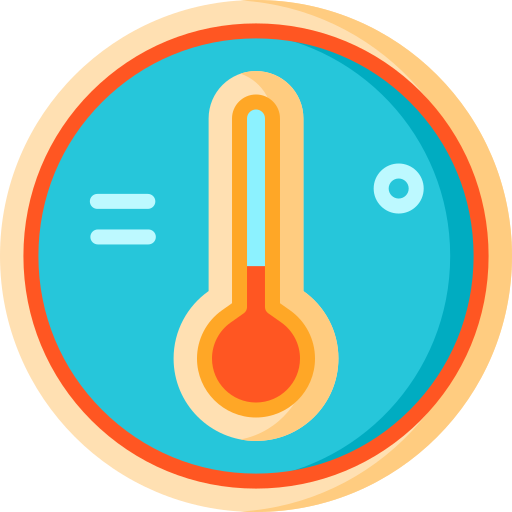
Partnerships
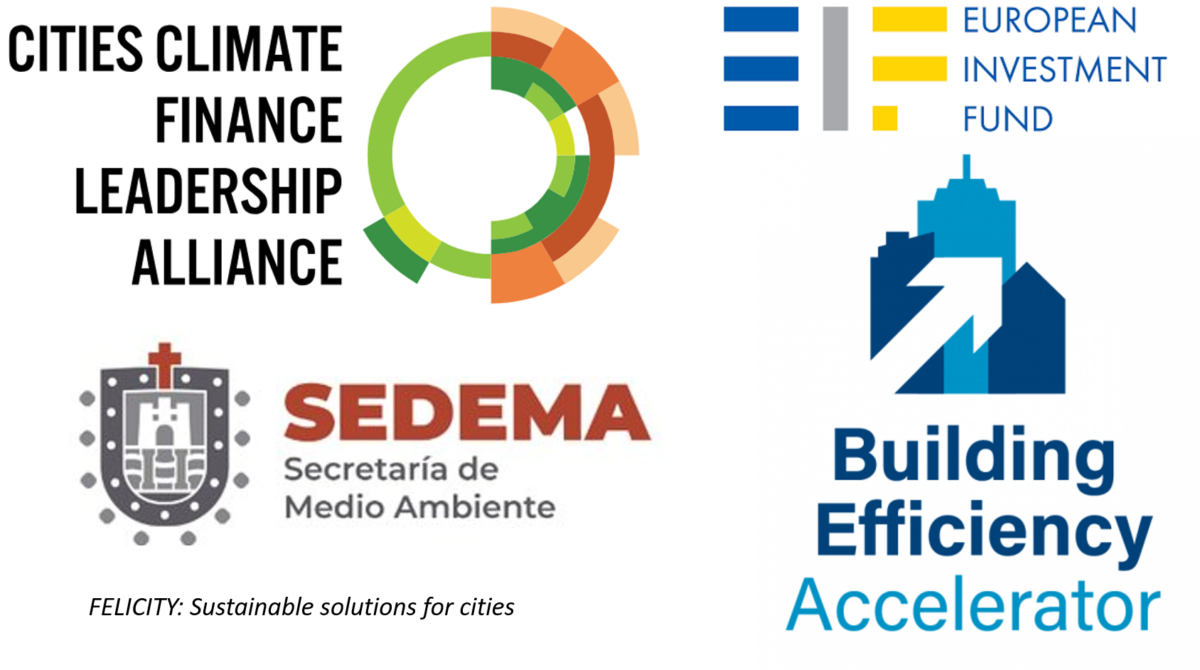
References
Comisión Reguladora de Energía. (2019). Factor de Emisión del Sistema Eléctrico Nacional. Ciudad de México: México. Available at: https://www.gob.mx/cms/uploads/attachment/file/442714/Aviso_Factor_de_Emisiones_2018.pdf
Gobierno de la Ciudad de México. (2017). Proyectos sobre cambio climático. Available at: http://www.data.sedema.cdmx.gob.mx/cambioclimaticocdmx/eficiencia-energetica.html.
Instituto Nacional de Estadística y Geografía. (2018). Primera encuesta nacional sobre consumo de energéticos en viviendas particulares (ENCEVI). Comunicado de prensa N. 541/18, pp. 1-3. Available at: https://www.inegi.org.mx/contenidos/saladeprensa/boletines/2018/EstSociodemo/ENCEVI2018.pdf
Refrinoticias. (2018). Industria del aire acondicionado en México crece el 7% anual . Available at: https://refrinoticias.com/?p=6503
Coyle, D. & Diamond. (2010). Smart Nanotextiles: Materials and Their Application. Encyclopedia of Materials: Science and Technology, Pages 1-5. https://doi.org/10.1016/B978-0-12-803581-8.03345-2
SEDEMA. (2017). Eficiencia energética. Ciudad de México: México. Available at: http://www.data.sedema.cdmx.gob.mx/cambioclimaticocdmx/eficiencia-energetica.html
Zalba, J.M. Marin, L.F. Cabeza, H. Mehling, (2003) Review on thermal energy storage with phase change: materials, heat transfer analysis and applications, Applied Thermal Engineering 23, 251–283.
Konuklu, Y., Unal, M., Paksoy, H. (2014). Microencapsulation of caprylic acid with different wall materials as phase change material for thermal energy storage. Solar Energy Materials And Solar Cells, 120, 536-542. doi: 10.1016/j.solmat.2013.09.035
De la Torre, G. (2018). Panorama 2018 del sector de energías renovables en México. Asesoría Financiera en Deloitte México.
Código Fiscal del Distrito Federal, Article 276 and 277. NADF-013-RNAT-2007
Team

Valentina Sierra Jiménez
Chemical engineering student, 10th semester at the Universidad Nacional de Colombia, campus Medellín.
E-mail: [email protected]
Phone: +57 3052415931

Natalia Avendano Ortega
Chemical engineering student, 10th semester at the Universidad Nacional de Colombia, campus Medellín.
E-mail: [email protected]
Phone: +57 320 5981561
